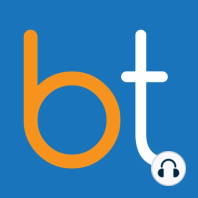38 min listen

Ep. 327 Building a Pain Interventions Service Line with Dr. Stephen Hunt
Ep. 327 Building a Pain Interventions Service Line with Dr. Stephen Hunt
ratings:
Length:
32 minutes
Released:
May 29, 2023
Format:
Podcast episode
Description
In this episode, host Dr. Michael Barraza interviews Dr. Stephen Hunt about building a pain practice, including his nerve ablation technique, how to obtain referrals, and why it is one of the most rewarding procedures that he does.
---
SHOW NOTES
We begin by discussing what caused Dr. Hunt to start building a pain service. He was treating many patients with lung cancer, and he saw so many patients toward the end of their life. What they wanted was to reduce their suffering due to pain. He saw what was being offered for them, which was opioids, but this caused them to be disconnected from their families at such an important time in their life. He knew he could offer nerve blocks and ablation, so he began educating himself. As he learned about different blocks, he adapted them to create his own technique.
Pretty soon, word got out that he was doing this, and he started getting referrals from oncologists. Soon after this, thoracic surgeons and breast surgeons began referring to him for post-thoracotomy and post-mastectomy pain. Next, radiation oncologists referred their patients with radiation necrosis of the ribs, and orthopedic surgeons referred patients to him for pain from musculoskeletal metastases.
For his technique, he often starts with a test block using bupivacaine and triamcinolone, which prolongs the effect of the bupivacaine and provides relief for around two weeks. For the ablation, he does the block in the same way, waits 15 minutes, and then injects ethanol to ablate the nerve. Some tips he has learned for celiac ablation are to ablate the retrocrural splanchnic nerves, because they feed into the celiac, and you will get a better result. Other areas he commonly ablates are intercostal nerves. For these, to avoid devastating paralysis from damage to the spinal cord, he always orients his needle lateral and stays at least two inches away from the spine. He advises those new in pain interventions to remember your anatomy. In radiology, we learn it all, and if you remember these nerves, you will be able to help a lot of people with their pain and decrease their suffering, making an enormous impact on someone’s quality of life.
---
RESOURCES
PIGI Lab:
https://www.med.upenn.edu/pigilab/
Twitter:
@PigiLab
@md_rogue
---
SHOW NOTES
We begin by discussing what caused Dr. Hunt to start building a pain service. He was treating many patients with lung cancer, and he saw so many patients toward the end of their life. What they wanted was to reduce their suffering due to pain. He saw what was being offered for them, which was opioids, but this caused them to be disconnected from their families at such an important time in their life. He knew he could offer nerve blocks and ablation, so he began educating himself. As he learned about different blocks, he adapted them to create his own technique.
Pretty soon, word got out that he was doing this, and he started getting referrals from oncologists. Soon after this, thoracic surgeons and breast surgeons began referring to him for post-thoracotomy and post-mastectomy pain. Next, radiation oncologists referred their patients with radiation necrosis of the ribs, and orthopedic surgeons referred patients to him for pain from musculoskeletal metastases.
For his technique, he often starts with a test block using bupivacaine and triamcinolone, which prolongs the effect of the bupivacaine and provides relief for around two weeks. For the ablation, he does the block in the same way, waits 15 minutes, and then injects ethanol to ablate the nerve. Some tips he has learned for celiac ablation are to ablate the retrocrural splanchnic nerves, because they feed into the celiac, and you will get a better result. Other areas he commonly ablates are intercostal nerves. For these, to avoid devastating paralysis from damage to the spinal cord, he always orients his needle lateral and stays at least two inches away from the spine. He advises those new in pain interventions to remember your anatomy. In radiology, we learn it all, and if you remember these nerves, you will be able to help a lot of people with their pain and decrease their suffering, making an enormous impact on someone’s quality of life.
---
RESOURCES
PIGI Lab:
https://www.med.upenn.edu/pigilab/
Twitter:
@PigiLab
@md_rogue
Released:
May 29, 2023
Format:
Podcast episode
Titles in the series (100)
Ep. 21 Vertebral Augmentation with Dr. Venu Vadlamudi and Dr. Kumar Madassery: Vertebral augmentation can be accomplished throug… by BackTable Vascular & Interventional